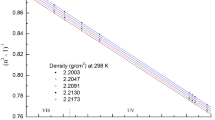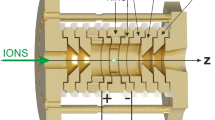Processes of electron trapping and detrapping determine in many respects intense processes arising in dielectric and delayed by 1–100 ns from the irradiation pulse of a high-power electron beam, such as electron emission, electric discharge in the bulk of the dielectric, flashover, and electric breakdown. A model of charged donor center ionization in a dielectric exposed to a strong electric field is constructed. The model takes into account 1) the energy spectrum of the charged donor center in the dielectric, 2) the semiclassical state density in the donor center, 3) spontaneous emission of phonons by the electron localized in the donor center, 4) increase in the kinetic energy of the electron (heating) in the external electric field, 5) electron tunneling through a potential barrier and its reflection from the barrier depending on the external field intensity, and 6) thermal fluctuations of energy of the electron localized in the donor center. The probability of charged donor center ionization in the dielectric per unit time is calculated. In weak fields, the field dependence of the ionization probability almost coincides with that for the Poole–Frenkel theory. In strong fields, the contribution of electron heating to the external electric field is the deciding factor.
Similar content being viewed by others
References
R. B. Oswald, Jr., IEEE Trans. Nucl. Sci., NS13, 63–69 (1966).
D. I. Vaisburd and I. N.Balychev, Pis’ma Zh. Eksp. Teor. Fiz., 15, No. 9, 537–540 (1972).
D. I. Vaisburd, B. N.Semin, É. G. Tavanov, et al., High-energy Electronics of a Solid Body [in Russian], Nauka, Novosibirsk (1982).
D. I. Vaisburd and K. E. Evdokimov, Phys. Status Solidi, C2, No. 1, 216–222 (2005).
A. G. Vaisburd and D. I. Vaisburd, Int. J. Radiat. Appl. Instrum., D20, No. 2, 315 (1992).
D. I. Vaisburd and K. E. Evdokimov, Russ. Phys. J., No. 11, 15–22 (2004).
D. I. Vaisburd and K. E. Evdokimov, in: Proc. 4th Int. Conf. on Electric Charges in Non-Conductive Materials, Tours (2001), 282–285.
D. I. Vaisburd and E. G. Tavanov, Pis’ma Zh. Tekh. Fiz., 1, No. 11, 531–534 (1975).
V. V. Butkov and D. I. Vaisburd, Dokl. Ross. Akad. Nauk, 293, No. 3, 598–602 (1987).
N. F. Mott and E. A. Devis, Electronic Processes in Noncrystal Substances, Vol. 1 [Russian translation], Mir, Moscow (1982).
Ya. I. Frenkel, Zh. Eksp. Teor. Fiz., 8, No. 12, 1292–1301 (1938).
V. N. Abakumov, V. I. Perel’, and I. N. Yassievich, Nonradiative Recombination in Semiconductors [in Russian], Saint Petersburg (1997).
I. A. Parfianovich and E. E. Penzina, Electron Color Centers in Ionic Crystals [in Russian], East-Siberian Press, Irkutsk (1977).
K. V. Shalimova, Physics of Semiconductors [in Russian], Energoatomizdat, Moscow (1985).
G. Raunio and S. Ronaldson, Phys. Rev., B2, No. 6, 2098–2103 (1970).
Author information
Authors and Affiliations
Corresponding author
Additional information
Translated from Izvestiya Vysshikh Uchebnykh Zavedenii, Fizika, No. 12, pp. 10–16, December, 2008.
Rights and permissions
About this article
Cite this article
Vaisburd, D.I., Evdokimov, K.E. The Poole–Frenkel effect in a dielectric under nanosecond irradiation by an electron beam with moderate or high current density. Russ Phys J 51, 1255–1261 (2008). https://doi.org/10.1007/s11182-009-9174-y
Received:
Published:
Issue Date:
DOI: https://doi.org/10.1007/s11182-009-9174-y




